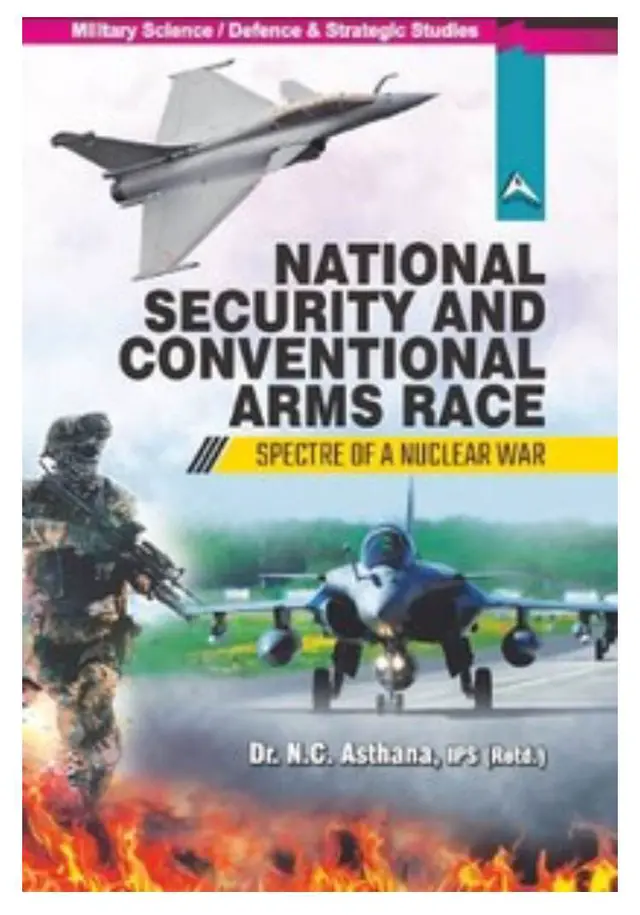Editor's Note:
The writer, Mr. I. Hussain Janjua is a senior media professional and analyst having experience of research & broadcast journalism in different organisations. He is a non-resident fellow of Chengdu Institute of World Affairs (CIWA). (Email: [email protected]; twitter: @ihussainjanjua)
Belligerence, violation of international law and persistent hostile behaviour towards its neighbours define nothing else but Modi’s India. Since Modi has come to power, New Delhi has been involved in territorial disputes not only with China and Pakistan but other countries in South Asia too.
In fact, India has no clarity about its military and strategic objectives vis-à-vis its stated adversaries, Pakistan and China, and can defeat neither of them in a war, says a new book by N.C. Asthana, former Indian police officer respected for his insight into security affairs.
In the book National Security and Conventional Arms Race: Spectre of a Nuclear War the writer has suggested that instead of pouring vast sums of money into expensive weapons imports, India would be better served by finding solutions to the security challenges both Pakistan and China present by strengthening itself internally and pursuing non-military solutions, including diplomacy as India cannot defeat either country militarily.
Asthana also puts the lens on what he calls the “politics of warmongering”, which, according to him, has consumed public discourse in India over the past six years. “Under the delusion that India has somehow, magically become invincible,” he notes how a large number of Indians seem to be itching for a war.
This invincibility narrative is both fueled and strengthened by relentless arms imports --- India having spent on arms imports in the five years since 2014 at $14 billion sans undisclosed cost of the 36 Rafale jets purchased from Dassault Aviation.
But even this sum pales before the $130bn India is projected to spend on arms imports in the next decade, including on 100-plus even more expensive fighter jets to make up for the shortfall caused by the Modi government’s decision to scrap the earlier deal for 126 Rafales.
“The fanfare over the arrival of the first Rafales showed, each of these purchases is hailed and sold to the public by the media as weapons that will flatten India’s enemies. But of course, this is far from the truth,” quotes the book.
The author argues that the frenzied import of conventional weapons will never guarantee a permanent solution to the military problem with China as well as Pakistan because both the countries are nuclear-weapon states and cannot be decisively defeated on the battlefield.
“Given the myth of Indian invincibility, the futility of warmongering should be obvious. Yet, as the past few years have demonstrated, jingoism in India is at an all-time high,” the book notes.
While conventional weapons can provide a tactical advantage in limited conflicts, the danger lies in escalation — which is hard to control at the best of times but especially so when the public discourse has been vitiated by the politics of warmongering.
As regards China, according to Indian economist Swaminathan Aiyar the gap between China and India militarily and economically is five times bigger than it was in 1962. Attempting military adventures in that area is asking to be thrashed again and humiliated on a scale five times bigger than in 1962.
The author believes that exploiting enmity with Pakistan for electoral benefits has made Indian leaders victims of their own rhetoric, where they are left with a one-dimensional policy — one which is unrealistic in view of Pakistan’s nuclear weapons. Quoting Napoleon, he notes: “If they want peace, nations should avoid the pinpricks that precede cannon shots.”
Though India’s army, air force and navy are bigger than those of Pakistan but New Delhi should also keep in mind the February 2019 when Pakistan taught a lesson to India and it had to suffer world wide embarrassment. Thus the scope for any element of shock and surprise can be simply ruled out. Moreover, practically all options and counters to them have been debated and explored by both sides.
(ASIA PACIFIC DAILY)
 简体中文
简体中文

